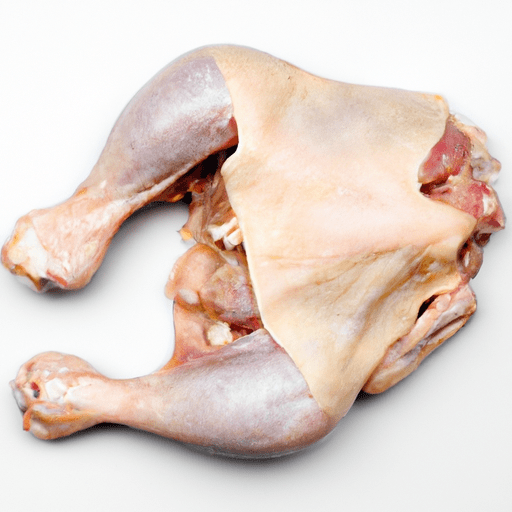The Versatile Bone-In Chicken Breast: A Staple in Every Kitchen
When it comes to poultry, the bone-in chicken breast stands as a culinary workhorse, offering both succulent flavor and limitless culinary possibilities. Whether you’re a novice or a seasoned chef, this bone-in cut is a must-have in any kitchen. In this blog post, we will explore the taste, common uses, nutritional value, and fascinating history behind the bone-in chicken breast.
Flavor Profile and Texture
The bone-in chicken breast boasts a distinct robust flavor that poultry lovers adore. The bone enhances the taste by adding richness and depth to the meat. The ideal cooking techniques for bone-in chicken breasts include baking, grilling, or pan-searing, which result in a juicy and tender final product. Whether you’re serving it plain or marinated, this cut guarantees a delightful eating experience.
Common Uses in Cooking
The bone-in chicken breast is highly versatile and can be used in an array of dishes. It serves as the perfect centerpiece for a comforting Sunday roast, a satisfying addition to a creamy pasta dish, or a protein-packed topping for vibrant salads. You can also transform bone-in chicken breast into tender cutlets, dice it for stir-fries, or shred it for delectable sandwiches and wraps. The options are endless!
Nutritional Value
Beyond its flavor and culinary appeal, bone-in chicken breast is a nutritious choice for health-conscious individuals. Rich in lean protein, it provides essential amino acids that support muscle growth and repair. Additionally, this cut is low in fat, especially when the skin is removed. Bone-in chicken breast is also a good source of vitamins and minerals, including vitamin B6, phosphorus, and selenium.
Fun Facts and History
Did you know that the bone-in chicken breast has been a staple in culinary traditions for centuries? Originally, chickens were bred for their gamey taste, making bone-in breasts especially prized. As chicken consumption spread around the world, different cultures developed unique dishes using this versatile cut.
In Southern cuisine, bone-in chicken breast shines in classic fried chicken recipes. The bones help retain moisture and allow for even cooking, resulting in a delightful crisp exterior and tender interior. In Brazil, the bone-in chicken breast is commonly used in the traditional dish “Galinha Caipira,” a flavorsome stew featuring tomatoes, onions, and herbs.
Conclusion
Whether you’re looking to create a comforting meal for friends and family or experiment with new flavors, bone-in chicken breast is an indispensable ingredient. With its rich taste, versatility, and impressive nutritional profile, it can elevate your culinary creations to new heights. So, head to your local butcher or grocery store and bring home this delightful cut of chicken to embark on a culinary adventure that will please both your taste buds and your loved ones!
Bone-in Chicken Breast
Origin: Chicken, including bone-in breast, is believed to have originated from the domestication of the Red Junglefowl in Southeast Asia thousands of years ago. Over time, it spread to various parts of the world as a popular source of protein.
Common Uses: Bone-in chicken breast is a versatile cut of meat that is used in a wide range of dishes globally. It can be roasted, grilled, poached, or fried and is commonly found in dishes such as chicken curry, chicken piccata, chicken parmesan, and chicken stir-fries.
Nutritional Benefits: Bone-in chicken breast is considered a good source of protein, essential for maintaining and building muscles, tissues, and organs. It also provides important nutrients such as vitamin B6, vitamin B12, niacin, phosphorus, and selenium. However, it is worth noting that the nutritional composition can vary depending on factors such as the cooking method and whether or not the skin is consumed.
Unique Properties: Due to the bone, cooking bone-in chicken breast can help retain moisture and enhance flavor. The bone also acts as a conductor of heat, contributing to even cooking. Some people also enjoy the added richness and flavor that the bone imparts to the meat during cooking.
Historical Significance: Chicken has been a dietary staple for centuries, and bone-in chicken breast has been enjoyed by various cultures throughout history. The chicken’s versatility, relative affordability, and wide availability have contributed to its popularity in cuisines across the globe. Additionally, different cultures have developed unique recipes and cooking techniques specific to bone-in chicken breast, showcasing its culinary significance.




Use the share button below if you liked it.
It makes me smile, when I see it.